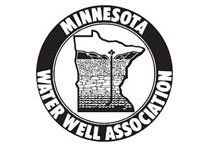Located in Elk River, MN 763-427-6100
Residential
Count on Us for Residential Well Drilling Services
Drilling of New Wells
Well Owners Handbook PDF File
Water wells are a mystery to many people, even though their own homes are supplied by a residential well.
If you're in need of a well, whether it be for new home construction or to replace your existing system, you deserve the best system you can buy. To accomplish this you should understand the basics of well and pumping system designs.
Screened wells and open-hole wells are the two most prevalent well designs in East Central Minnesota.
Screened wells provide water from sand and gravel aquifers of the "glacial till" - the upper geologic deposits left by the Ice Age. A borehole is drilled until the desired water-bearing sand or gravel formation is penetrated. A cylindrical screen is attached to the bottom of well casing and installed in the formation. Water then passes through the screen and enters the well. The productivity of a screened well is dependent on the ability of the formation to transmit water and the length, diameter, and slot size of the screen.
Open-hole wells are finished in sedimentary bedrock such as sandstone and limestone.
These formations are porous and fractured and allow water to pass through them. A borehole is drilled to the bedrock, and casing is installed and seated in the rock. A smaller hole is then drilled past the end of the casing to create an "open hole" in the bedrock. The open hole provides a conduit for the water flow into the well casing. Productivity of an open hole well is determined by the formation's ability to transmit water and the volume of the open hole.
Once the well is completed a pump can be chosen. Variables which are considered to determine the proper pump size include: the static water level and specific capacity of the well, the well size, flow requirements, pressure requirements, and size and length of water pipes.
In an average household, 10 gallons per minute (gpm) of water at 40/60 psi is adequate for day-to-day use and 15 gpm is preferable. If any extraordinary demands exist such as lawn irrigation, geothermal systems, etc., it is important to size the pump appropriately to avoid an under-supply to the house.
The pressure tank is a reservoir, which allows small amounts of water to be consumed without excessive cycling of the pump.
Submersible pump motors are designed for continuous use and should operate for 1 minute or longer during each cycle. The tank, therefore, should be large enough to accommodate the flow rate of the pump. However, new "constant pressure" technology is now available which drastically reduces the required tank size. The tank is usually installed in the basement, but other options are available.
System Upgrades
E.H. Renner & Sons offers 24-hour emergency service.
Call us at 763-427-6100 and we'll try to get out to the site as soon as possible.
Watch for These Signs of Trouble
- Pump starts and stops continually
- Pump runs without water being used
- Pump will not shut off
- Pump will not start (check for power)
- Pump runs but does not deliver water
- Control box smokes or gives off an offensive odor
- Control box develops an unusual noise
- Air in your water lines
- Rust, dirt or other material in the water
If any of these occur, shut the power off immediately and contact us.
We do have upgrades perfect for sprinkler systems, Geothermal systems, or having minimal space for tanks. Look at the new SQE Grundfos system or Franklin Electric Mono Drive!
Call us to get FREE
iron and hard water test!
763-427-6100
Before you build
For several reasons, you will want to hire a well contractor as soon as you finalize your building plans. In many developing areas, contractors are experiencing backlogs of two months or longer.
Therefore, it is important to hire someone promptly to avoid delays in your construction schedule. Also, determining the well location and installation of water and power lines should be performed at the onset of construction to achieve the best results.



Our Facebook Feed
Contact Us
E.H. Renner & Sons
15688 Jarvis St NW
Elk River, Minnesota 55330
Tel:
763-427-6100
Elk River, Minnesota 55330

Privacy Policy
| Do Not Share My Information
| Conditions of Use
| Notice and Take Down Policy
| Website Accessibility Policy
© 2025
The content on this website is owned by us and our licensors. Do not copy any content (including images) without our consent.
